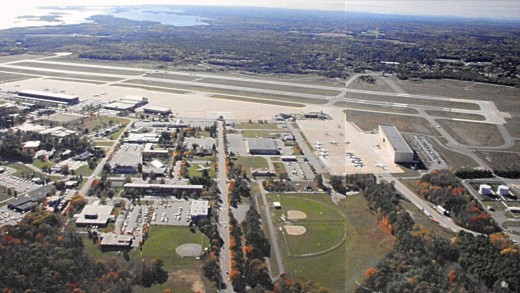Read excerpt from start of this article:
In 2005, the Brunswick (Maine) Naval Air Station was designated for closure — one of more than 350 military installations ordered closed between 1989 and 2005 by the U.S. Defense Department’s Base Realignment and Closure Commission (BRAC).

As with many other base closures, the impacts were severe. A report prepared following the BRAC announcement for Brunswick spelled this out:
“The Base consists of 3,300 acres, two runways, and a full complement of aircraft and personnel support services and facilities. Base employment [in October 2004] consisted of approximately 3,000 military; 1,400 reservists; and 700 civilians. … For every civilian worker on the Base who loses his or her job, there are expected to be two additional civilian workers in the Bath-Brunswick region who will be losing their jobs due to the loss of consumer spending in the area. The military and civilians and their families on the Base spend approximately $80 million a year in the local economy – about 7% of taxable retail sales. …” — from A Regional Community Audit (March 2006).
But, as the report also noted, the closure would “create new assets for the region,” including a pool of skilled workers; a stock of affordable housing; and — most significantly — “a prime piece of real estate on the coast of Maine available for redevelopment.” Summing up, the report said that “the challenge to planners is to translate the loss of the Base into a boost for the regional economy.”
During the Northern New England APA conference in Brunswick, I joined a dozen other planners in touring the base, to learn how redevelopment has been progressing.

The Midcoast Regional Redevelopment Authority (MRRA), a state-created entity, is the “master developer” of Brunswick Landing, as the redevelopment project is called. As Steve Levesque, MRRA’s Executive Director, told us, “our role has morphed from planning to implementation … and our primary job now is to implement the property’s master plan [adopted in 2007].”
And What a Job that is …
The base is a huge, sprawling collection of buildings, from giant hangars, to an assortment of warehouses, to a large motel (formerly the second largest in the state), to runways, tarmac, and a variety of aviation-related facilities, to a staggering amount of infrastructure — most needing some level of repair.
You must be logged in or a PlannersWeb member to read the rest of the article.